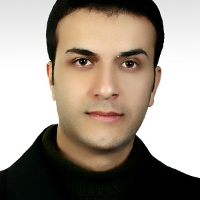Effects of dietary supplementation of soybean isoflavones on performance, plasma levels of some hormones and sexual behavior in male Japanese quail
Isoflavones or also known as phytoestrogens are naturally synthesized phenolic components of plants that have either estrogenic or antiestrogenic effects. A variety of phytoestrogens have been shown to bind to both isoforms of the estrogen receptor (ERα and ERβ) in vitro and activate ER-dependent gene transcription. There are 3 main classes of phytoestrogens: (1) isoflavones [derived principally from soybean, i.e. soybean isoflavone (SIF)]; (2) lignans (found in large quantities in flaxseed), and (3) coumestans (derived from sprouting plants like alfalfa). SIFs are the most effective bioactive group due to the high consumption of soy food in humans and animals. Considering the literature data, it must be ascertained that the most biologically active and the best described isoflavoneis genistein. Recently, the interest in genistein action has grown because of its role as a factor which can modulate processes involved in carbohydrate and lipid metabolism. These changes are often accompanied by alterations in the hormonal status of the organism. Isoflavones has gained popularity due to positive effects in human health as an alternative therapy for menopausal symptoms, osteoporosis and some hormonal disorders. On the other hand, these compounds may be considered endocrine disruptors due to negative effects found in the reproduction of animal models. It was reported that soy isoflavones antagonize estrogen-induced behavior in the brain. Moreover reproduction in the birds can be negatively influenced by dietary isoflavones. In birds, isoflavones and other phytochemicals may, in part, regulate seasonal reproductive cycles through inhibition of reproductive behavior. In general, the effects of isoflavones on poultry reproduction are contradictory. Few studies have been conducted on the effects of phytoestrogens in the diet on the reproductive performance of birds. Isoflavones and other phytochemicals may partially regulate the seasonal reproductive cycles of birds by inhibiting reproductive behavior. Therefore, in the present study, the effects of dietary supplementation of soy isoflavones on the performance, sexual behavior and plasma levels of some body hormones were investigated in male Japanese quail.
A total of 80 male Japanese quail were purchased at 28 d and randomly divided into four treatment groups with four repetition of 5 quails each, according to a complete randomized design. The birds after one week of gradual adaptation to new rearing system and feed, received the same basal diet with soy isoflavones added at 0 (control), 0.36, 0.72 and 1.08 g/kg feed. Soyagol tablets produced by Goldaru pharmaceutical company were used as a source of genistein. At 52 days of age, six birds per treatment were selected for blood collection and plasma levels of testosterone and T3 hormone were determined by commercial kits. At the end of the feeding trial (56 days of age), 6 birds from each group were slaughtered in order to make measurements of carcass cuts yield and some internal organs. Feed consumption, weight gain and feed conversion efficiency were calculated weekly during three experimental period. During the last week of the trial, appetitive male sexual behavior was assessed by measuring a learned social proximity response and consummatory behavior was assessed by measuring copulatory behavior per se. The size of the cloacal glands was also recorded at the beginning and end of the experiment using a digital Vernier caliper. This research was design using a complete randomized design. The data were analyzed using the GLM procedure of SAS software (SAS Institute, 1999). Where treatment effects were found (P≤ 0.05), means were separated by Duncan's multiple range tests.
The results showed that feeding soybean isoflavones at the level of 1.09 g/kg diet, significantly decreased the body weight gain of male quails during the second and third weeks of feeding trial compared to the control group (P<0.01). Moreover, the high level of isoflavone also revealed decreased feed intake during the second week of the supplementation (P<0.01). Effects of 3 week of soy isoflavones (ISF) treatment in the diet of Japanese quails were not statistically significant on body weight gain and feed conversion ratio. The experimental treatments had no significant effect on the relative weight of heart, liver and carcass yield. There was no mortality during the trial period. The inclusion of soy isoflavones at 1.08 g/kg diet, significantly diminished plasma testosterone and increased plasma T3 levels compared to the control (P<0.01). In the same dosage, the frequency of appetitive and consummatory aspects of sexual behaviors was also reduced compared to the control group (P<0.01). Increasing the dose of isoflavone compounds in the diet of male quails also exhibited decreasing the somatic testicular index and the size of the cloacal gland in a dose-dependent manner (P<0.01).
It is concluded that soy isoflavone may induce an inhibitory effect on male sexual behavior in Japanese quail by acting as an endocrine disruptor and inhibiting reproductive development. Soy isoflavones in doses of 0.36 and 0.72 g/kg diet, despite the fact that they were much higher than the usual doses used in previous studies, did not significantly affect the body weight gain and relative weights of the liver in Japanese quail. Therefore, it can be concluded that isoflavones did not show severe toxic and hormone-disrupter effects at these supplementation levels. However, isoflavones in the high dose used in the present study decreased significantly plasma testosterone concentrations and led to dramatic changes in the testes weights and sexual behavior of male Japanese quails. The present results suggest that high concentrations of isoflavones in the diet may exert endocrine disruptor-like effects on the reproductive system of the male, but not the female, quail.
- حق عضویت دریافتی صرف حمایت از نشریات عضو و نگهداری، تکمیل و توسعه مگیران میشود.
- پرداخت حق اشتراک و دانلود مقالات اجازه بازنشر آن در سایر رسانههای چاپی و دیجیتال را به کاربر نمیدهد.




